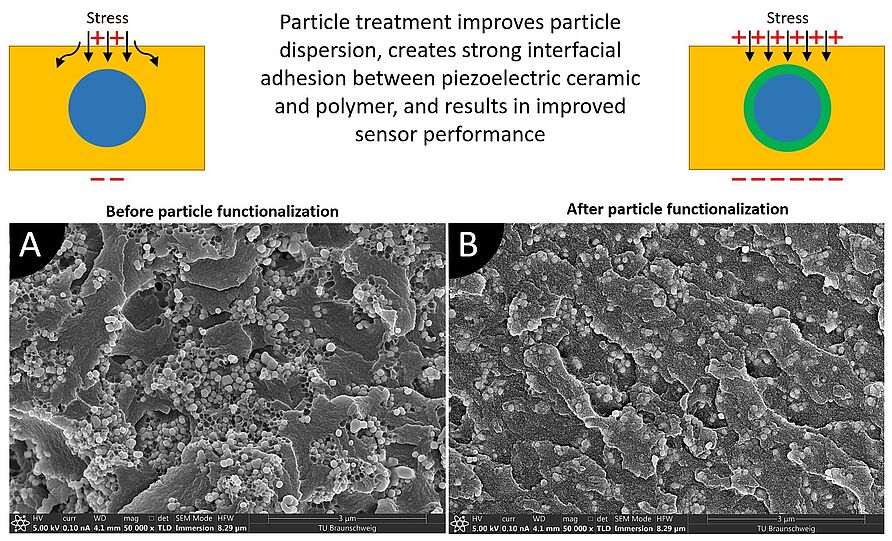To improve the performance of lead-free piezoelectric composites, the functionalization of the filler particles has been suggested as a successful strategy in several recent reports. The details of the functionalization process, however, are not clear, nor is its influence on the dielectric properties of the composites. This study reports a systematic investigation of the functionalization process parameters of barium titanate nanoparticles (BTONP) with 3-(trimethoxysilyl)propyl methacrylate (TMSPM) used as a linker to an acrylate-based matrix polymer. Functionalization process temperature, time, functionalization agent ratio, solvent, and catalyst influence on the functionalization degree were measured by thermogravimetric analysis (TGA), elemental analysis, and Fourier-transform infrared (FTIR) spectroscopy. Elevated temperature and average functionalization time led to the highest functionalization degree in the form of a TMSPM monolayer on the particle surface. Three solvents, with and without catalysts, were investigated and two types of functionalized BTONP were selected for composite manufacturing. To this end, the functionalized particles were used to manufacture 10 vol.% BTONP/photopolymer UV light-curable composite suspensions. After solidification of the suspensions by exposure to UV light, the microstructure and dielectric properties of the resulting composites were investigated. It was seen that functionalization improves the dispersion of particles, increases suspension viscosity, and decreases the curing depth and dielectric properties.
A. Zarinwall, R. Mitkus, A. Marth, V. Maurer, M. Sinapius, G. Garnweitner
Processing of 3-(Trimethoxysilyl)propyl Methacrylate (TMSPM) Functionalized Barium Titanate/Photopolymer Composites: Functionalization and Process Parameter Investigation
Journal of Composite Science 2023, 7(2), 47 [Link]

